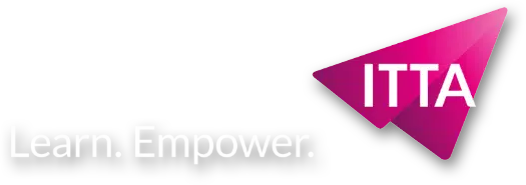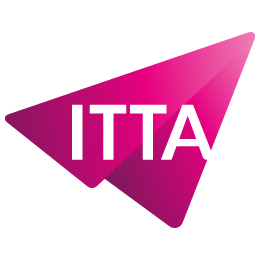Mastering Word Processing: More Than Just a Writing Tool
Word processing is one of the quiet yet essential pillars of digital productivity today. Whether writing a report, structuring a contract, or collaborating on a shared document, professionals rely on these tools daily—often without fully realizing their true potential. Microsoft Word has become the industry standard not only because of its ease of use but also due to its extensive features and compatibility with modern office workflows.
Despite its ubiquity, most users only take advantage of a small fraction of its capabilities. Many simply type text, change fonts, or insert images. Yet behind this simple façade lies a powerful ecosystem of features that can automate tasks, standardize document production, and streamline collaboration. Understanding and mastering these capabilities means acquiring a cross-functional skill that is increasingly sought after in today’s professional environments.
Microsoft Word: A Familiar Interface, an Underestimated Tool
Word is often the first software people learn to use, starting as early as school. This familiarity can lead to a false sense of mastery. In reality, very few users know how to structure a document using hierarchical styles, generate an automatic table of contents, manage multilevel numbering, or insert dynamic fields.
That’s precisely where the Word – Fundamentals training comes in. It helps consolidate the basics and instill best practices from the start: logical formatting, well-structured paragraphs, proper use of tabulations, automated lists, table insertion, and page break management. These often-overlooked skills form the foundation of rigorous document production.
Advanced Use Cases for Professional Documents
Beyond the basics, Word becomes a powerful tool when dealing with complex documents or those subject to specific requirements. Annual reports, RFPs, internal procedures, theses, or client deliverables all demand clear structure, consistent formatting, and often the automation of recurring elements.
The Word – Complex Documents course directly addresses these challenges. It covers essential topics such as hierarchical styles, custom headers and footers, bookmarks, cross-references, section management, and dynamic tables of contents. With these tools, users can create long, robust, navigable, and scalable documents.
Page Layout: A Balance Between Aesthetics and Efficiency
A well-structured document is not enough if it’s not also easy to read. Page layout plays a crucial role in enhancing visual clarity and content value. Word includes numerous features to improve visual presentation: columns, backgrounds, image wrapping, borders, color schemes, and more. But knowing when and how to use them is key.
The Word – Page Layout training helps users optimize readability, respect branding guidelines, and master the visual ergonomics of a document. It is ideal for content professionals as well as administrative, legal, or HR staff.
Standardizing, Modeling, Automating: Tools for Document Production
To industrialize document production, Word allows users to create reusable templates. This ensures graphical and editorial consistency across an organization while simplifying employees’ workflows. A well-designed template can include styles, logos, macros, dynamic fields, and even conditional content.
This approach is explored in the Word – Styles, Templates and Macros course, which also introduces automation. Macros, in particular, allow users to record and replay repetitive sequences (e.g., inserting a table, applying styles, saving to a specific format). This functionality can save valuable time, especially in high-volume production environments.
Mail Merge and Forms: Streamlined Personalized Communications
Word also includes powerful features for managing mass personalized communications. With mail merge, users can generate letters, contracts, or certificates from a database, eliminating manual data entry. This is especially useful in HR, sales, or administrative departments.
In the Word – Mail Merge and Forms course, participants learn to create interactive electronic forms, insert controlled fields (dropdowns, checkboxes, text fields), and secure files to prevent unauthorized changes. These documents can then be distributed, filled out, and returned seamlessly without the need for third-party tools.
Word in Teams: The Challenges of Collaborative Work
With the rise of remote work and cloud-based tools, team document creation has become the norm. Word has adapted by offering real-time co-editing, track changes, commenting, and version control.
The Word – Collaborative Work training shows how to leverage these features by integrating with Microsoft 365, OneDrive, and SharePoint. Participants also learn to secure documents, manage access rights, and streamline approval workflows.
Staying Up to Date with Word and Office Enhancements
The Microsoft Office suite is constantly evolving, both in functionality and interface. Word 2021, for instance, introduced new dictation tools, improved cloud integration, smarter review features, and enhanced collaboration options. Failing to stay up to date risks relying on outdated and less efficient methods.
That’s why the Office 2021 – What’s New course helps users discover recent updates and adapt their workflows to modern standards. It is particularly valuable for those engaged in tech watch or process optimization.
A Transferable Skill Valued Across All Sectors
Advanced Word proficiency is not just for executive assistants or secretaries. It’s increasingly essential for project managers, quality officers, trainers, lawyers, accountants, salespeople and anyone whose credibility relies on the quality of their documentation.
In this sense, investing in Word training is not merely about “learning software.” It’s about increasing professional efficiency, enhancing document presentation, and gaining autonomy in day-to-day deliverables. This is a cross-functional skill that’s CV-friendly, instantly useful, and valuable over time.
Unlocking the Full Potential of Word Processing
Word processing is one of the most underestimated areas of office software. Yet it can be one of the most powerful once you understand its advanced mechanics. As Microsoft’s flagship solution, Word offers much more than basic writing: it structures, automates, secures, and supports collaborative workflows.
Rather than relying on trial and error, investing time in progressive training tailored to your level and professional needs is a smart move. Because behind every well-crafted business document lies a set of specific and often invisible skills that truly make a difference.

